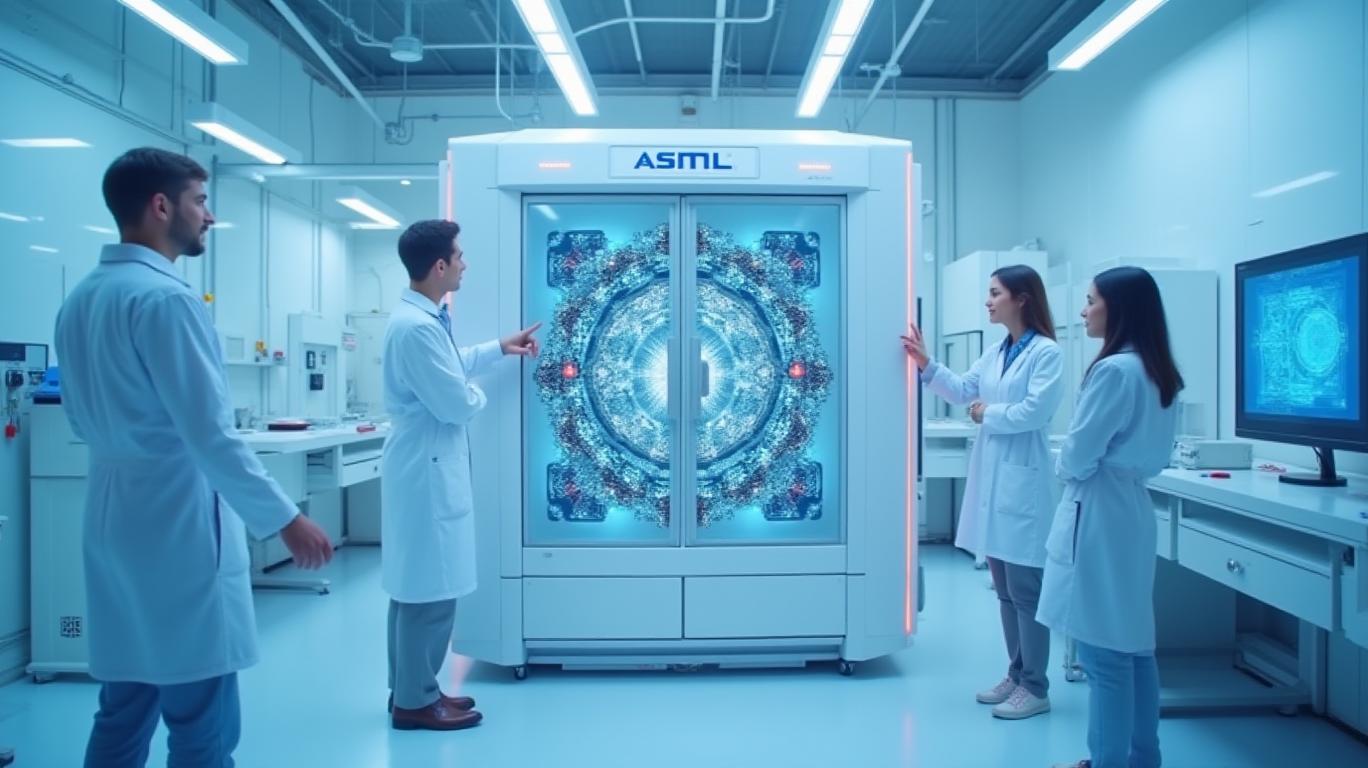ASML's Strategic Edge in a Fractured World: Why Tariffs Can't Deter This Semiconductor Titan
The semiconductor industry is at a crossroads. U.S.-China tariff wars have upended global supply chains, forcing chipmakers to reengineer their strategies. Yet amid this chaos,
N.V. (ASML) stands out as a paradox: its stock has dipped slightly this year, yet its strategic position in advanced lithography has never been stronger. For investors, the decline presents a rare opportunity to buy a monopoly on the most critical technology for the AI revolution—extreme ultraviolet (EUV) lithography—just as supply chain diversification is fueling its demand.
The Tariff Tightrope
The U.S. has imposed 25% tariffs on semiconductor equipment imports, including ASML's systems, to incentivize domestic chip production under the CHIPS Act. This has raised costs for U.S. customers like Intel and TSMC's Arizona fabs. ASML CFO Roger Dassen has confirmed that tariffs will be passed to buyers, but the real test is whether chipmakers can justify these expenses in an era of AI-driven demand.
The answer, so far, is yes. reveals resilience: despite tariff headwinds, ASML's shares are up 13.5% this year, outpacing the broader semiconductor sector. Analysts project a 19.5% upside to €904 by year-end, driven by AI's insatiable appetite for advanced chips.
The Diversification Dividend
Tariffs have accelerated a global reshoring race. The U.S. is building factories, while China is expanding mature-node capacity. South Korea and Taiwan are doubling down on leading-edge nodes. Japan's Rapidus consortium is targeting 2nm chips by 2027. Each of these efforts relies on ASML's EUV machines, which are indispensable for chips smaller than 7nm.
Even in China, where export controls block the most advanced tools, demand for ASML's older DUV systems remains robust. Chinese firms are investing in automotive, IoT, and industrial chips—markets that require mature nodes, not EUV. ASML now derives over 25% of sales from China, a figure that could stabilize as its customers diversify beyond state-backed giants like SMIC.
Why ASML's Moat Can't Be Tariffed
ASML's dominance in EUV is a monopoly of unparalleled scale. Competitors like Nikon and Canon lack the R&D firepower to replicate its 13nm resolution systems. The result? A pricing power that transcends tariffs.
Consider this: An EUV system costs $150 million—plus 25% in tariffs. That $37.5 million surcharge pales next to the $2 billion a single chip factory spends on ASML equipment. For Intel or TSMC, absorbing these costs is a small price to pay for securing a machine that enables 3nm chips, the gold standard for AI processors.
Moreover, ASML's installed base management (IBM) services—upgrades and maintenance for its 500+ installed EUV systems—generate recurring revenue with 50%+ margins. These contracts are insulated from tariffs, creating a cash flow engine that funds R&D for next-gen High-NA EUV tools (priced at $400 million each).
The AI Catalyst: Why Now?
The AI boom is ASML's tailwind. Every AI data center, self-driving car, or smart home device demands chips that EUV alone can produce. NVIDIA's H100 GPUs and AMD's Instinct accelerators rely on 5nm nodes, while Google's next-gen TPUs target 3nm. Each node shrink requires ASML's technology, ensuring demand for decades.
Analysts at Goldman Sachs estimate AI's semiconductor addressable market at $500 billion by 2030. ASML's share? A conservative 15%, or $75 billion annually—a figure that doesn't account for its High-NA systems, which could push margins higher.
Risks? Yes. But Overblown.
Bearish arguments focus on near-term risks: tariff exemptions, delayed EUV shipments, and oversupply in the chip market. Yet ASML's backlog remains robust, with orders extending into 2026. Even if demand softens, chipmakers can't stop investing in EUV without ceding leadership to rivals.
Meanwhile, geopolitical risks are a double-edged sword. U.S.-China tensions force chipmakers to “friendshore” production—building fabs in allied regions like Taiwan or Europe. Every new factory needs ASML's tools.
The Bottom Line: Buy the Dip
ASML's intrinsic value is €697.70, yet its shares trade at €694.60—a 0.5% discount. This is a rounding error for a company with a 35% operating margin and a fortress balance sheet ($12.7 billion in cash). The real story is the secular tailwind of AI, which justifies its 7/10 “Great” rating.
Investors should act now. shows a trajectory that will only accelerate as High-NA systems enter mass production. The tariff wars won't upend ASML—they'll only solidify its role as the linchpin of the AI era.
Action: Buy ASML now. The next five years will reward those who bet on the monopoly behind the chips that power the future.

Comments
No comments yet